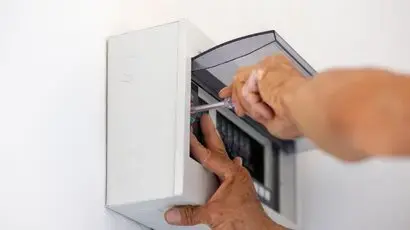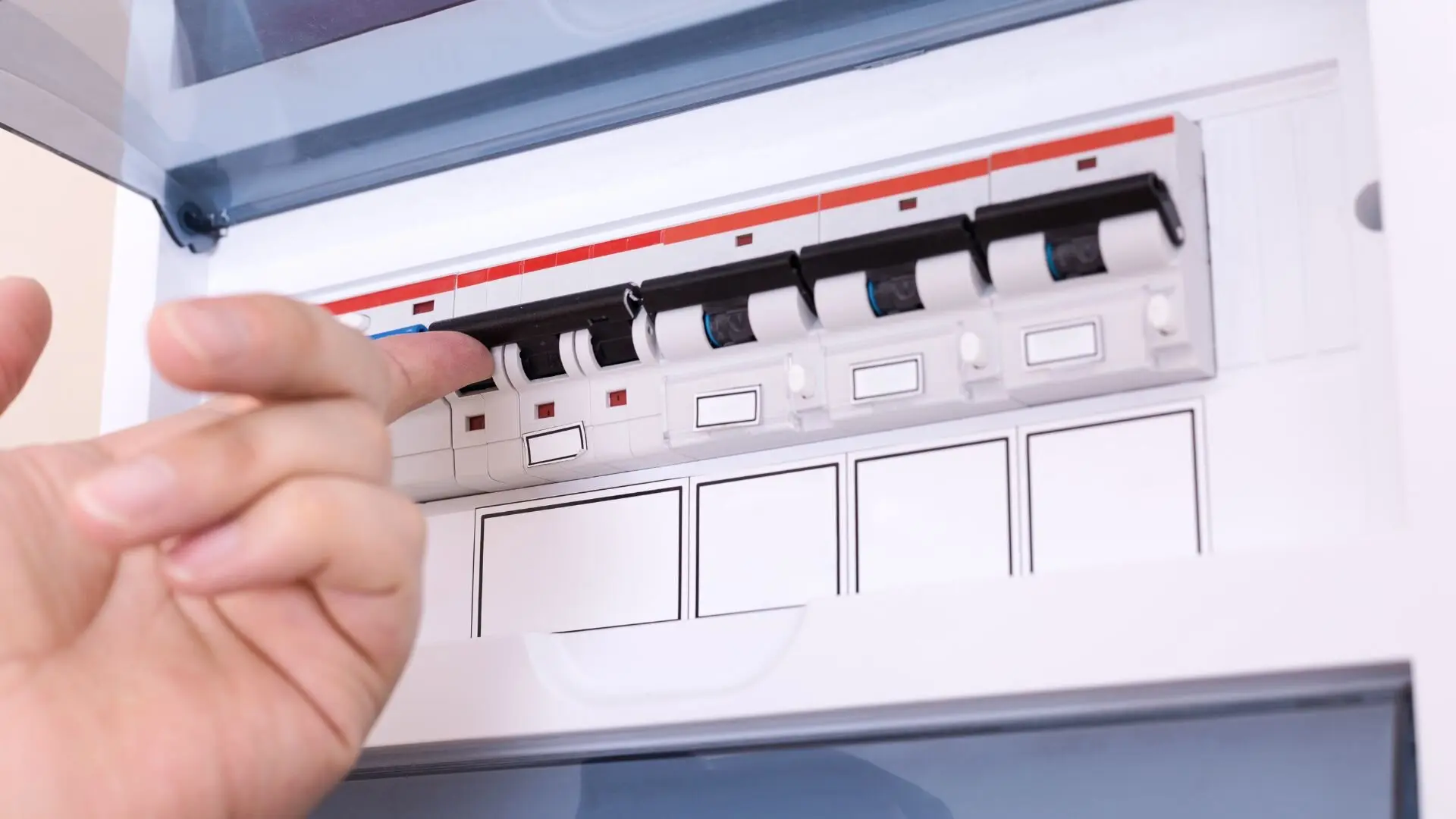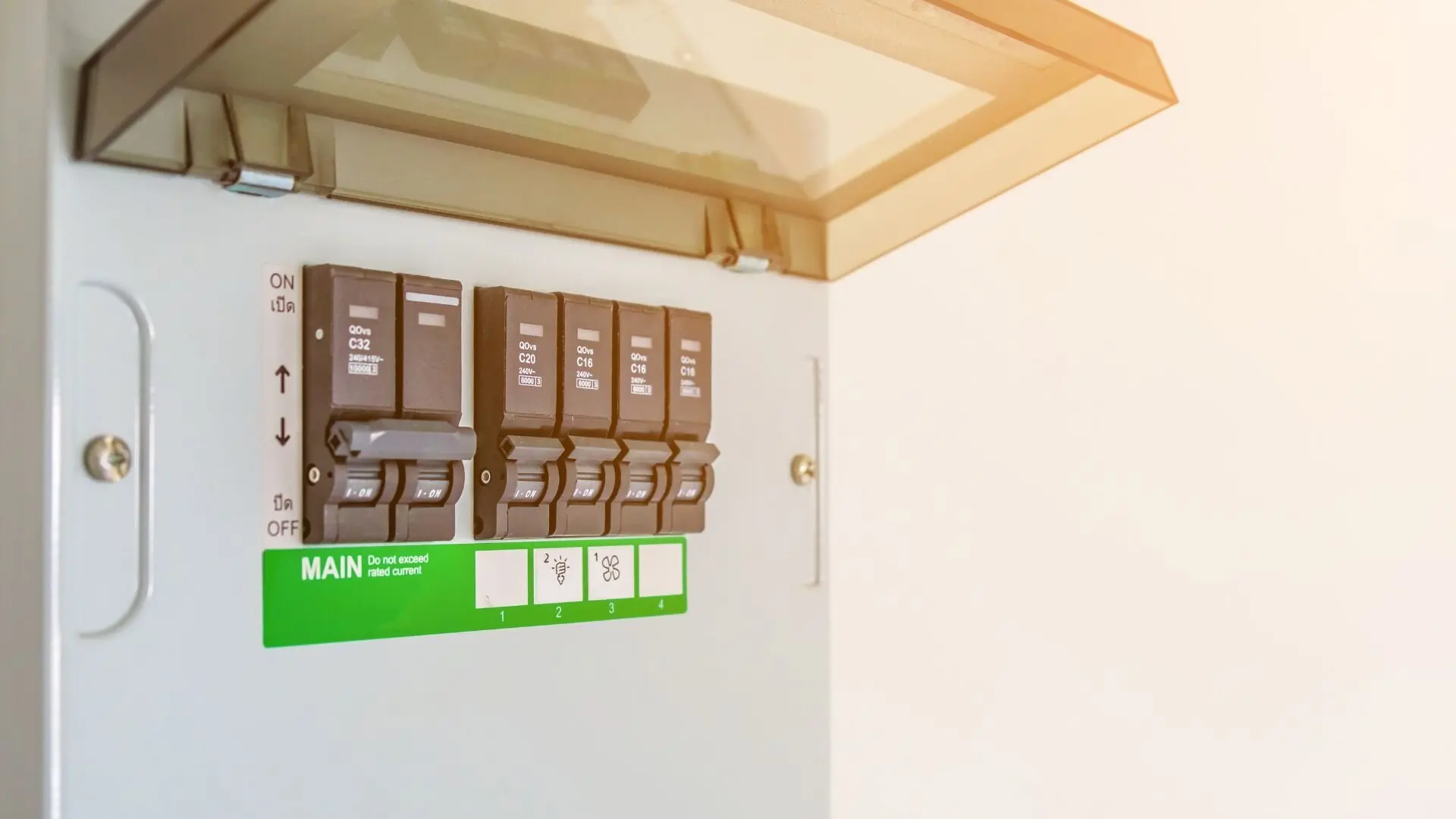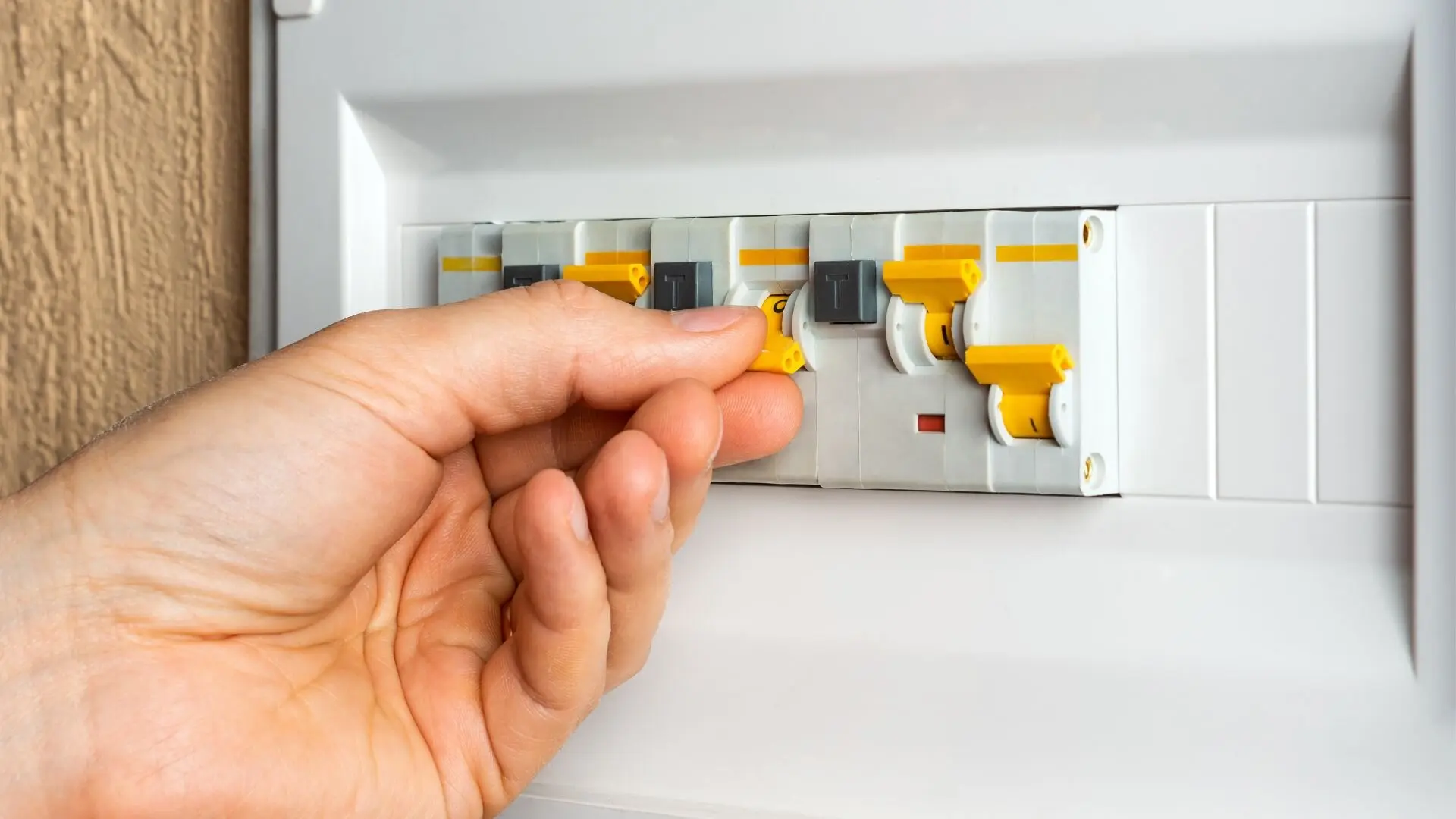
Get your free Melbourne Electrician quote today!
Our team of Melbourne Electricians is here to help you with any questions or concerns you may have. We’re committed to providing you with the best possible service and support.
Electricity is a modern convenience, but it also carries risks. Learn about Residual Current Devices (RCDs) – life-saving devices that protect against electric shocks and electrocution in Australian homes.
Electricity in our homes certainly makes life easier, but it also brings risks, such as electric shocks and electrocution. In Australia, Residual Current Devices (RCDs) are vital to protect against these dangers, swiftly cutting off the power supply if there’s a fault or leakage .
The Australian government enforces strict rules and standards for installing and maintaining RCDs in homes to ensure electrical safety. This detailed guide will cover how RCDs work, where they’re required in your house, the types available, why regular testing and maintenance matter, and the overall advantages they provide.
Whether you’re a homeowner or tenant, understanding the significance of RCDs is essential for safeguarding your family and property from the risks associated with electricity.
Read on to equip yourself with the knowledge to protect your home against electric shocks and electrocution.
What are RCDs?
Residual Current Devices, commonly known as RCDs, are life-saving electrical safety devices designed to protect against electric shocks and electrocution . These devices are designed to monitor the flow of electrical current in a circuit and detect any imbalance or leakage of current to earth.

[An RCD is a safety switch that can quickly detect even a tiny leakage current as small as 30 milliamps](https://en.wikipedia.org/wiki/Residual-current_device) – about the same current level that would pass through a person’s body if they touched a live wire. When an RCD detects this leakage, it automatically cuts off the electrical supply within a fraction of a second, significantly reducing the risk of electric shock or electrocution .
RCDs work by continuously monitoring the incoming and outgoing currents in a circuit. In a properly functioning circuit, the incoming and outgoing currents should be equal. However, if there is a fault or leakage current to Earth, the incoming and outgoing currents will become unbalanced. When the RCD detects this imbalance, it triggers and cuts off the electrical supply, preventing the leakage current from potentially causing harm.
By quickly interrupting the flow of electricity in the event of a fault or leakage, RCDs provide an essential layer of protection against electric shocks and electrocution.
They act as a safety net, ensuring that any potential electrical hazards are immediately mitigated, safeguarding people and property from the dangers associated with electrical faults.
Australian Standards and Regulations for RCDs
In Australia, the installation and use of RCDs in residential properties are governed by strict standards and regulations to ensure electrical safety. The primary standard that outlines the requirements for RCDs is the Australian/New Zealand Wiring Rules (AS/NZS 3000:2018) .
Current Australian Standards for RCD Installation (AS/NZS 3000:2018)
The AS/NZS 3000:2018 standard provides detailed guidelines on installing and using RCDs in domestic and residential premises. It specifies the types of RCDs required, their rated residual current, and the maximum permissible disconnection times for different circuits and applications.
Mandatory Requirements for RCDs in Various Areas of the Home
According to the AS/NZS 3000:2018 standard, RCDs are mandatory in certain home areas due to the increased risk of electric shocks . These areas include:
- Bathroom and laundry areas
- Kitchen and outdoor areas
- Final sub-circuits supplying socket-outlets
- Circuits supplying portable or hand-held equipment
The standard also outlines specific requirements for the maximum permissible disconnection times and the rated residual current for RCDs installed in these areas, ensuring high protection against electric shocks.
Compliance with State and Territory Regulations
In addition to the Australian Standards, each state and territory in Australia may have its own specific regulations and requirements for installing and using RCDs in residential properties. These regulations are typically aligned with the AS/NZS 3000:2018 standard but may include additional requirements or variations based on local conditions and building codes.
When installing or maintaining RCDs in residential properties, homeowners and electrical contractors must ensure compliance with both the Australian Standards and the applicable state or territory regulations. Failure to comply with these regulations can result in fines or legal consequences and, more importantly, compromise the home’s electrical safety.
Types of RCDs
RCDs are available in various types, each designed to suit specific applications and requirements. The three main types are fixed, portable, and combination RCDs.

Fixed RCDs
Fixed RCDs, also known as [circuit breaker RCDs](https://wpelectricians.com.au/blog/circuit-breaker-vs-rcd) , are permanently installed devices that protect the entire electrical installation or specific circuits within a building.
They are typically integrated into the main switchboard or distribution board and are designed to protect against earth faults and leakage currents in fixed wiring systems.
Fixed RCDs offer comprehensive protection for the entire electrical installation and are suitable for residential properties, commercial buildings, and industrial facilities. They are particularly important in areas with a high risk of electric shocks, such as bathrooms, kitchens, and outdoor areas.
Portable RCDs
Portable RCDs, often called safety switches or power boxes, are designed to protect portable electrical equipment and tools . These devices are typically used in construction sites, workshops, and other temporary or mobile environments where electrical equipment is frequently moved or used in different locations.
These portable RCDs come with socket outlets and are plugged in between the power source and the equipment you’re using.
These devices provide protection against electric shocks by constantly monitoring for leakage current. They automatically shut off the power supply when a fault is detected.
Combination RCDs
Combination RCDs, also known as hybrid RCDs, combine the features of fixed and portable RCDs . These devices are designed to protect fixed wiring installations and portable electrical equipment.
Combination RCDs typically include a fixed RCD integrated into a switchboard or distribution board, with additional portable outlet sockets. This allows for comprehensive protection of the entire electrical installation while providing a convenient means of connecting and protecting portable electrical equipment.
Regular Testing and Maintenance
Regular testing and upkeep of RCDs are critical to ensuring they effectively guard against electric shocks. Over time, RCDs might lose sensitivity due to factors like dust, moisture, or loose connections, hindering their performance.
Regular checks are crucial for catching any issues with your RCDs before they pose dangers. By testing them periodically, you can ensure they’ll function correctly and trip if there’s a fault.
Proper maintenance, such as cleaning the devices, checking for damage, and securing connections, helps prolong the lifespan of RCDs and prevents potential failures.
Incorporating regular testing and maintenance into your electrical safety routine ensures that your RCDs are always in good working condition, providing the necessary protection against electrical hazards and giving you peace of mind.
How to Test RCDs
Testing RCDs is straightforward and can be done by homeowners themselves. Most RCDs have a test button that simulates a leakage current , allowing you to check if the device functions correctly.

To test an RCD:
- Locate the test button on the RCD. It is usually clearly labelled and easily accessible.
- Press and hold the test button. This should cause the RCD to trip and cut off the power supply to the protected circuit.
- If the RCD does not trip, it may be faulty and need replacement.
- After the test, reset the RCD by pushing the reset button or lever.
Recommended Testing Frequency
To ensure optimal protection, it is recommended that RCDs be tested regularly. The Australian Standard AS/NZS 3000:2018 suggests testing RCDs at least every six months or more frequently (quarterly) in environments with higher electrical usage or risk.
Regular testing helps identify any potential issues with the RCD before they become a safety hazard, allowing for timely repairs or replacements.
When to Replace RCDs
While regular testing and maintenance can extend the lifespan of RCDs, there are certain situations where replacement is necessary:
- Age : RCDs have a limited lifespan, typically around 10-20 years , depending on the manufacturer and usage conditions. Older RCDs may become less reliable and should be replaced.
- Malfunction : If an RCD fails to trip during testing or exhibits other signs of malfunction, it should be replaced immediately to ensure continued protection.
- After a severe electrical event : If an RCD has experienced a significant electrical fault, surge, or lightning strike, it may be damaged and should be replaced as a precautionary measure.
Benefits of RCDs
RCDs provide many benefits that enhance electrical safety and offer peace of mind for homeowners:
- RCDs quickly detect and cut off power in the event of a leakage current, significantly reducing the risk of potentially fatal electric shocks, especially in high-risk areas like bathrooms and kitchens.
- By interrupting the electrical supply when a fault is detected, RCDs help mitigate the risk of electrical fires caused by faulty wiring or appliances, protecting homes and families.
- Knowing that their electrical installation is equipped with RCDs can give homeowners a sense of security and alleviate concerns about the potential risks associated with electricity.
Investing in RCDs and ensuring they’re installed and maintained correctly allows homeowners to create a safer environment. This way, you can enjoy modern electrical conveniences without forfeiting safety.
Safeguard Your Home with RCDs
Electrical safety is paramount for every homeowner. RCDs offer vital protection against electric shocks, electrocution, and electrical fires, providing peace of mind and allowing you to enjoy modern electrical appliances safely. Regular testing and maintenance are crucial to ensure optimal RCD performance.
If you’re in Melbourne, trust the experts at [WP Electrical](https://wpelectricians.com.au/) for all your RCD needs. Our licensed electricians adhere to the latest standards and offer [comprehensive RCD and safety switch installation, testing, and maintenance services](https://wpelectricians.com.au/services/rcd-and-safety-switch-services) . [Contact us today to safeguard your home and protect your family with reliable RCD solutions](https://wpelectricians.com.au/contact-us) .
Published by: Pascal Harb17 October 2025